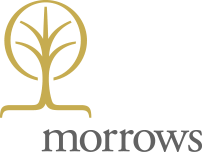Tax planning not only involves the consideration of the timing of income and deductions but also satisfying certain compliance requirements such as appropriate elections within certain deadlines.
Prior to the 30 June 2017 you are required to prepare and execute particular documentation such as trust distribution minutes. By undertaking well thought out and considered tax planning it enables Morrows to prepare said documents as further strategy to optimise your taxable position.
The following are some useful tools to optimise your taxable position:
- Delay receiving assessable income whether it be on a cash or accrual basis
- Take advantage of deductible expenses prior to 30 June 2017
- Keep certain payments with special conditions in mind such as certain superannuation contributions (see also section below regarding superannuation)
- Keep in mind the deductibility of negative gearing on property or shares
- When preparing trust distribution minutes take advantage of distributing to family members with a low marginal tax rate
We suggest a review of depreciation schedules which can allow you to take advantage of increased depreciation deductions, including the ability to write off assets, self-assessment of effective lives, or allocating assets to a low value pool. Furthermore, the small business concession may give rise to immediate write-off deductions for $20,000 on individual assets.
There is also the possibility (funds allowing) to bring forward staff bonus provisions if the policies are approved prior to 30 June 2017.
There are three methods for valuing trading stock – cost, market selling or replacement value because of obsolescence. The selection of the correct method can bring forward deductions, or alternatively increase taxable income if you have sufficient deductions for the year ending 30 June 2017.
A Small Business Entity (SBE) is generally defined as an entity with less than $10 million of aggregated turnover. Please note that there are other factors that affect an entity’s eligibility as an SBE. An SBE that is also a company will have a tax rate of 27.5% for the year ending 30 June 2017. This provides a clear benefit to an entity that operates as a company compared to other structures.
This would provide a substantial benefit for restructuring from other entity types, such as a discretionary trust, to a company. Due to the reduced company tax rate in the year ended 30 June 2017 we suggest monitoring franking account balances and franked dividends paid due to a decreased franking amount of 27.5%. We suggest contacting Morrows if you are interested in restructuring to take advantage of the reduced tax rate.
These tax optimisation strategies may be beneficial if your taxable income for the year ended 30 June 2017 will be significantly higher than the year ended 30 June 2018. An example of this may be due to a significant capital gain from the sale of shares or other irregular income amount in the 2017 financial year
As an individual with a rental property we highly suggest the use of a Tax Depreciation Quantity Surveyor such as BMT. This can drastically increase the depreciation deductions that can be offset against you other assessable income. Please contact Morrows if you would be interested in pursuing this.
Your adjusted taxable income at individual level may also impact on you or your family’s eligibility for certain government benefits such as childcare benefit, Youth Allowance, family tax benefits; among others.
The individual tax rates for the year ended 30 June 2018 are as follows:
| Taxable Income | Tax on this Income |
| $0 – $18,200 | Nil |
| $18,201 – $37,000 | $19c for each $1 over $18,200 |
| $37,001 – $87,000 | $3,572 plus 32.5c for each $1 over $37,000 |
| $87,001 – $180,000 | $19,822 plus 37 c for each $1 over $87,000 |
| $180,000 and over | $54,232 plus 45c for each $1 over $180,000 |
Please note the 2% Temporary Budget Repair Levy for high income earners will cease at 1 July 2017 and not be applicable for the year ended 30 June 2018.
Special note re Superannuation:
In consideration of our five useful tools to optimise taxable position mentioned above, number three is of particular importance. Superannuation is a highly specialised area but can greatly assist in optimising tax if undertaken correctly – specialist advice from Morrows is suggested.
Super contributions cannot be “accrued” – they must be physically paid and presented in the Super Fund bank accounts to be deductible.
Please see below for the concessional contributions (before-tax) caps
| Year Ended 30 June | Under 49
Aged 48 years or younger on 30 June of previous financial year
|
49 years to 59 years
Aged 49 years or older on 30 June of previous financial year |
59 years and over |
| 2018 | $25,000 | $25,000 | $25,000 |
| 2017 | $30,000 | $35,000 | $35,000 |
Please note the reduced general concessional cap of $25,000 applies for all ages from 1 July 2017.
The non-concessional (after-tax) contributions cap for the year ended 30 June 2017 is $180,000 with a 3-year “bring forward” rule under some circumstances.
The above mentioned tax optimisation strategies are not exhaustive. Most of our clients are contacted directly with a strategy and plan however feel free to contact us if you would like to discuss it further.



